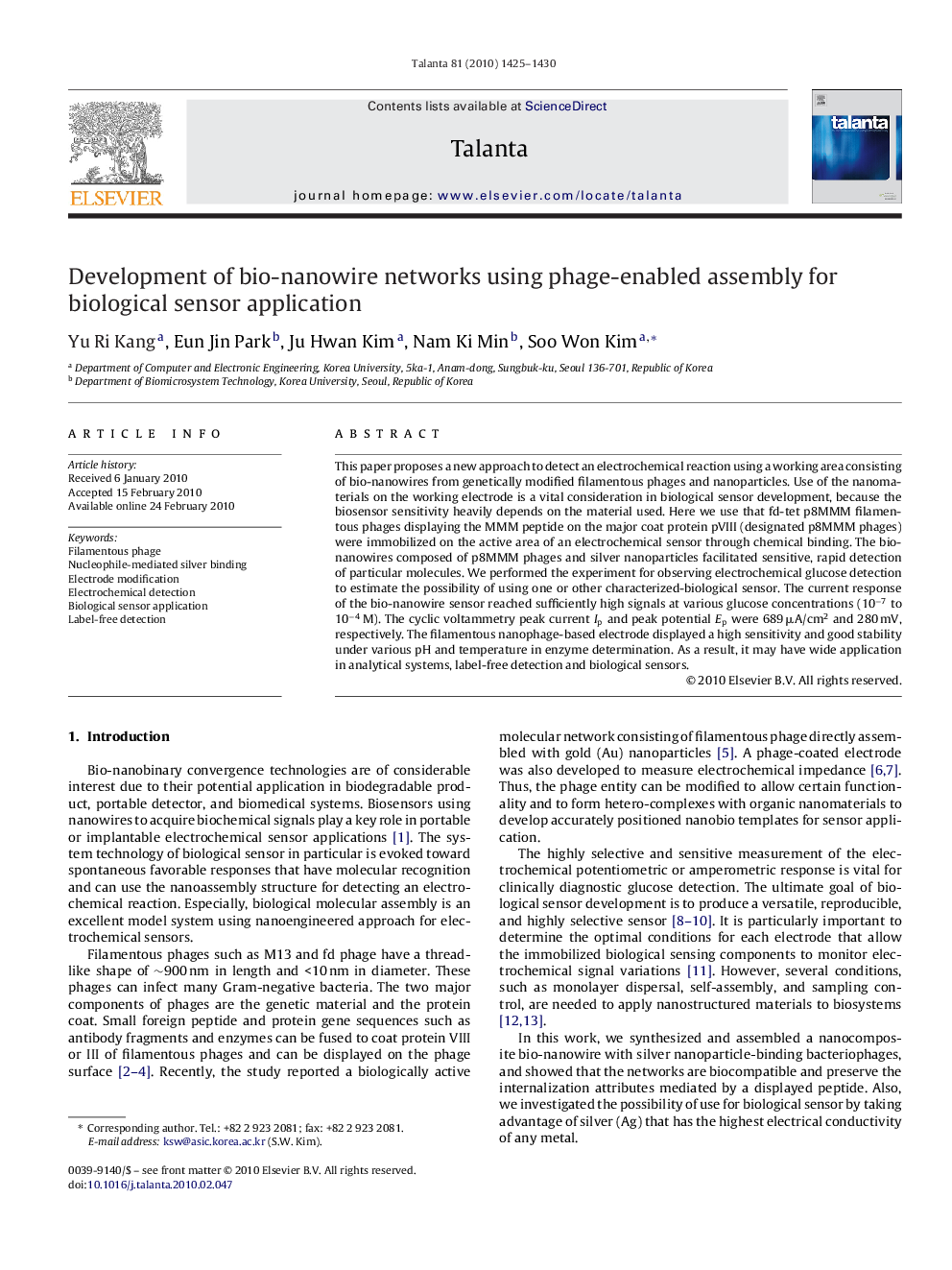| Article ID | Journal | Published Year | Pages | File Type |
|---|---|---|---|---|
| 1242649 | Talanta | 2010 | 6 Pages |
This paper proposes a new approach to detect an electrochemical reaction using a working area consisting of bio-nanowires from genetically modified filamentous phages and nanoparticles. Use of the nanomaterials on the working electrode is a vital consideration in biological sensor development, because the biosensor sensitivity heavily depends on the material used. Here we use that fd-tet p8MMM filamentous phages displaying the MMM peptide on the major coat protein pVIII (designated p8MMM phages) were immobilized on the active area of an electrochemical sensor through chemical binding. The bio-nanowires composed of p8MMM phages and silver nanoparticles facilitated sensitive, rapid detection of particular molecules. We performed the experiment for observing electrochemical glucose detection to estimate the possibility of using one or other characterized-biological sensor. The current response of the bio-nanowire sensor reached sufficiently high signals at various glucose concentrations (10−7 to 10−4 M). The cyclic voltammetry peak current Ip and peak potential Ep were 689 μA/cm2 and 280 mV, respectively. The filamentous nanophage-based electrode displayed a high sensitivity and good stability under various pH and temperature in enzyme determination. As a result, it may have wide application in analytical systems, label-free detection and biological sensors.
